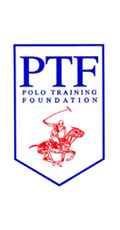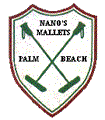CAMBIASO AND COMPANY PROVE THEY’VE STILL GOT GAME.
The buzz of this year’s Argentine Open focused on the newest up-and-coming star, Ellerstina’s Facundo Pieres, son of the legendary former 10-goal player Gonzalo Pieres, but it ended with the La Dolfina team’s brilliant win in the Open final at the Palermo field in Buenos Aires on December 10. The spectators were packed in to see perhaps an out-with-the-old-and-in-with-the-new result, but La Dolfina proved they haven’t lost their luster.
While Ellerstina was trying to capture Argentina’s Triple Crown, La Dolfina, led by Adolfo Cambiaso, was determined not to suffer defeat. Since the team’s creation six years ago, La Dolfina has made it to the final each year but won only once before. Joining Cambiaso were his brother-in-law, Lolo Castagnola, and Mariano Aguerre and Luquitas Monteverde.
Facundo joined up with his brother, Gonzalo Jr., and cousins Pablo and Matias Mac Donough to form the Ellerstina team. The team was mowing down the competition, mostly experienced polo squads, with the skill and sharpness of a chainsaw cutting a sapling. After pocketing both the Tortugas and Hurlingham Opens, many people thought they had a good chance of taking the Argentine Open and thus Argentina’s Triple Crown.
Still, there were those who weren’t so sure, given their youthful inexperience in such a high-pressure tournament. The team played together the previous year but lost to La Aguada in the final of the Tortugas. They didn’t make the final in either the Hurlingham or Palermo Opens. Facundo, with his flashy style, played well last year, and many people compared him to Adolfo Cambiaso. But, like Cambiaso, he was more of an individual superstar rather than a team player.
Realizing the difficulty in teaching your own children how to play polo despite your own past successes, Gonzalo Pieres turned to an unlikely rival. He hired 9-goal Memo. Gracida, his longtime opponent from his days playing with White Birch in the United States. It spoke volumes for Pieres’ respect for Gracida, who held a 10-goal rating for 21 consecutive years. Gracida has often been referred to as “el Capitan” because of his organization skills both on and off the field. Pieres brought in Gracida to serve as coach to the team of young guns.
Gracida seemed to be able to get the Ellerstina players to focus as a team. Facundo, playing No. 1, didn’t lose any of his luster, but he began to become more of a team player. Gonzalito, it turns out, may not have the flashy style of his brother but is a workhorse and, creating plays at No. 3, emulates his father.
La Dolfina was the only other team with a 3-0 record going into the final, but the media coverage favored Ellerstina. Still, La Dolfina had played a good tournament and earned their spot in the final. With much anticipation the final match was underway. It wasn’t long before La Dolfina began showing their strengths as they went ahead 9-5 at the end of the third period and 11-8 after four. Ellerstina, with Gonzalo Pieres Jr. leading and Matias Mac Donough taking the penalties, rallied to narrow the gap and by the sixth chukker had equalized the score at 15. Monteverde and Aguerre effectively marked Gonzalo Pieres and Pablo Mac Donough, preventing Facundo, who was being marked by Castagnola, from getting passes.
With still two chukkers left (they play eight chukkers in Argentina) Ellerstina seemed to have the pony advantage, but Cambiaso had the support and encouragement of the spectators in the Dorrego stands, the most popular seats. In the last minutes of the eighth chukker, Aguerre’s first goal of the match put La Dolfina ahead 19-18, but Matias Mac Donough converted a 40-yard penalty at the warning bell to tie the game once again. Cambiaso, who seemed unstoppable, shouldered the responsibility for winning the game. With just 20 seconds left on the clock, it looked like he might have done just that. He shot at goal but hit the post, and the ball ricocheted out of bounds. The goal judge signaled a goal, but the umpires correctly overruled it. The 19-19 game would be decided in overtime.
In the extra chukker, with what must have surely seemed like the weight of the world on his shoulders, Matias Mac Donough took a 60-yard penalty but was unable to convert it. Moments later, Ellerstina was awarded a midfield penalty. Matias hold onto the ball, but with Cambiaso marking him tightly, the ball ricocheted off the leg of Cambiaso’s horse. Cambiaso wasted no time, turning his horse and racing downfield with the ball. Cambiaso wasn’t about to let his chance slip. Once he passed midfield, the spectators leapt to their feet watching as he stroked the ball through the goal. With the goal judge waving the flag, Cambiaso threw his mallet in the air and jumped off his horse to embrace his wife, friends and grooms. The spectators burst into applause and the Ellerstina team hung their heads in disbelief. Visitors said it was one of the best games in a long time and as spectators milled about after the game, Cambiaso was all people could talk about. Still it was a team effort and Cambiaso couldn’t have done it without Aguerre, Castagnola and Monteverde.
The 112th playing of the Argentine Open had begun a few weeks prior. In the opening match, Indios Chapaleufú II’s Escue Alberto Heguy, Marcos Di Paola, Milo Fernández Araujo and Eduardo Heguy came out against Centauros Beaufort in a choppy match riddled with fouls. Di Paolo was filling in for Nachi Heguy, who was suspended since the Hurlingham match.
The foreigners’ squad—the first team lining up all foreign players in 39 years, included English brothers Luke and Mark Tomlinson, Chilean Jaime García Huidobro and Australian Jack Baillieu. They played a good game before losing 12-6.
The story was completely different in Field No. 1 as La Dolfina took on El Paraíso’s Agustín, Sebastián and Juan Ignacio Merlos and Mike Azzaro, filling in for an injured Paco de Narvaez. The match became a duel between the two powerful forwards, Cambiaso and Agustin “Tincho” Merlos, but Cambiaso prevailed with the support of his teammates.
The next day, La Aguada Telmex—Javier, Eduardo, Miguel and Ignacio Novillo Astrada—got off to a terrific start with an 11- 6 win over El Metejón’s Lucas Criado, Santiago Chavanne, Alejandro Agote and Mariano González.
That afternoon on Palermo’s No. 1 field (referred to as “the Cathedral”) Ellerstina’s Pieres and Mac Donough brothers defeated the Chapi I team’s Bautista Heguy, Juan Martín Nero, Horacio and Marcos Heguy 14- 13. While the favored Ellerstina team had a better start, Chapa I, led by an outstanding Bauti Heguy together with Nero’s great performance, began overcoming the Tortugas’ and Hurlingham’s winners to lead 9-5 in the fourth chukker. However, Facundo Pieres’ stick work, added to some bad luck for Chapi I, changed the results of the match.
The second weekend, brought a surprise: The polo family had been enlarged. Between the fourth and the fifth chukkers of the match between La Dolfina and Centauros Beaufort, Cambiaso was told that his wife, María Vázquez, was in labor. La Dolfina’s No. 1, played one more chukker, scoring two more goals, before heading to Clínica Otamendi to see his new son, Adolfo III. With Alejandro Muzzio substituting, his team managed to get a clear-cut, 27-7 victory.
The next game, Agustín Merlos lead El Paraíso to a victory over Indios Chapaleufú II 19-13. Tincho was the trump card of the orange-shirt team that played with De Narváez back in the lineup. Tincho’s defining moments were in two offensive bursts—four goals in the third chukker and three in the fifth.
The next day was a surprise. Ellerstina started playing the final chukker against El Metejón, their division’s lowest handicap team, down 14-12. Headed by Santiago Chavanne, the red-and-black-shirted El Metejón team was close to winning, but Ellerstina’s all-out effort and a couple of controversial calls allowed the scoreboard to change in Ellerstina’s favor, 15-14.
La Aguada rallied to leave Chapi I behind 12-9 in their next outing. In the beginning, Chapaleufú I was beating the Novillo Astradas 4-0 during the second chukker. But La Aguada began putting pressure on their opponents, preventing them from scoring a goal for 24 minutes, to take the win.
In the third and last weekend before the final, El Paraíso defeated Centauros 16-9 in a match that lost its rhythm while rain started falling heavily. Consequently, the next match, Group A’s final game between La Dolfina and Indios Chapaleufú II, had to be put off until the following Monday.
Fortunately, the sun shone on Sunday, allowing the regularly scheduled games to be played. At Field 2, El Metejón enjoyed a great victory after defeating Indiecito 10-9. This meant the end of a forgettable Open for the Heguys’ squad, which, seriously affected by the lack of ponies, was eliminated in the first round for just the second time in 22 years.
At the main field, Ellerstina, after its close call against El Metejón, played with a whole different attitude against La Aguada. In a superb match, with a continuous exchange of shots, there was a four-goal burst during the fifth chukker and the same at the end of the game resulting in an 18-14 score that gave Ellerstina the ticket to the final.
On Monday, the final playoff game was La Dolfina against Indios Chapaleufú II, whom they defeated 13-12, in the most lackluster game of the tournament. It was the first game back for Chapi II’s Nachi Heguy after he was suspended from play after colliding with El Paraiso’s Francisco de Narvaez in the Hurlingham tournament. Chapi II needed to win the match by 11 goals. If they won by fewer, El Paraiso would advance to the final, while a win for La Dolfina meant La Dolfina earned a top spot. It was unlikely that Chapaleufú II would beat La Dolfina by so many goals, and with some bad feelings still lingering between Chapi II and El Paraiso, Chapi II wasn’t about to send El Paraiso to the final. The whisper in the stands was the game was fixed for La Dolfina to win, and they certainly played like it was. Neither team wanted to hurt their horses, so it was like watching a practice game.
AIKEN CURA
Aiken Cura, the multiprized stallion in the 2005 Argentine Open, has definitely entered in the record of one of polo’s greatest horses. According to 10-goal great Adolfo Cambiaso, “This stallion is astounding … it is indeed a marvelous horse.” Others agree, as the AACCP (Argentine Polo Breeders Association) agreed, awarding Aiken Cura the best Argentine-bred horse playing in the 2005 Argentine Open and the AAP (Argentine Polo Association) named him the best horse playing in the tournament. Aiken Cura comes from the well-known polo breed of Ricardo Santamarina. His sire was Alma de Bacan (by Crown Thy Good), while his dam was Lady Nun. In 1996, at just 6 months old, Aiken Cura was acquired by Eduardo Bérèterbide who trained him for polo at his ranch in Carmen de Areco. “It was such a beautiful horse, so well built and it came from such an excellent breed that I decided to keep him as a stallion,” Eduardo Bérèterbide told us beaming with pride. “Curita [as he refers to Aiken Cura] was a rapid learner with an amazing intelligence; in fact I played with Curita some chukkers when he was just 2 years old, while my son Luciano started playing Curita in tournaments at the age of 3. From the early beginning I knew he was headed to be a polo crack.” When the horse was 5 Eduardo sold Aiken Cura to his close friend Salvador Socas, who played it for two years before selling him to his half-brother Adolfo Cambiaso. From then on an unbeatable polo duo was born: Cura-Cambiaso. Together with Cambiaso Aiken Cura played in the Open for the first time in 2004. But undoubtedly, Cura’s crowning year was 2005 when he played in the three big opens, Tortugas, Hurlingham and Palermo, between two or three chukkers per match. He carried Cambiaso to score six goals in the Argentine Open final against Ellerstina. After his r e m a r k a b l e performance, he was awarded with all the possible prizes, including the Lady Susan Townley Cup, for being the best polo horse of the tournament; AACCP prize for being the best pony among the registered Argentine polo products; and the Argentine Rural Society. The Lady Susan Townley Prize has been awarded since 1908. In 1908 the River Plate Polo Association, created the Lady Susan Townley Cup to be awarded every year to the best polo horse played in the Argentine Open Polo Championship. This cup was donated by Walter Townley, British minister with an office in Buenos Aires, who named this cup after his wife. Once the Argentine Polo Association was organized in 1922, it continued giving the Lady Susan Townley Cup every year, as it still does, to the horse that exhibits the best qualities in a polo horse during the most difficult and prestigious tournament. Aiken Cura is the first stallion in history to be awarded any such prizes in the Argentine Open and is the first horse in history to receive all three prizes at once. Interestingly enough, players were forbidden to play stallions in the Argentine Open until 1954. Now, many players play stallions. And once proven to be good polo ponies, they are used for breeding. For Eduardo Bérèterbide, Aiken Cura “represents the authentic Argentine polo horse: fast, short, quick and extremely good-tempered.” For Adolfo Cambiaso, “Cura’s principal characteristic is his acceleration and endurance.” We will likely see more of Aiken Cura in the future and eventually may even see some of his progeny playing. |









